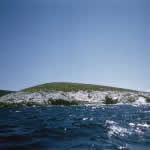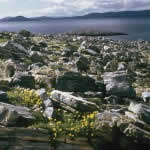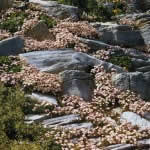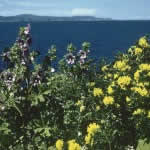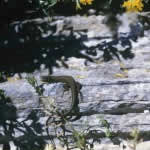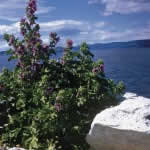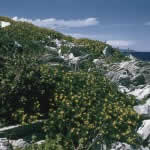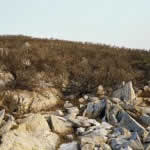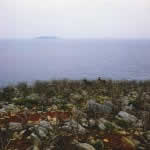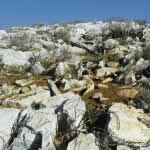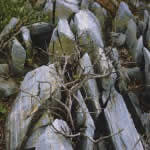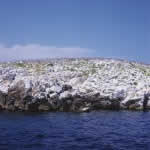Strongylò was a little Garden Eden in the Aegean Sea – in the Skantzoura archipelago of the Northern Sporades.
Until it was devastated by people who had brought goats and rabbits to this vulnerable isle.
In April 1958 I visited Strongylò for the first time to study the hitherto unknown lizards that lived there in the shelter of lush foliage. Once this green cover was destroyed, the lizards hardly could survive because most insects vanished as well (cf. my article Skantzoura – the satellite islands: Symbiosis with Eleonora’s falcons).
The fragile nature of such tiny spot in the sea is not strong enough to recover. And the threats – mostly rabbits – still continue to exist. To come back to life Strongylò needs human help. So I pledge to the Management Body of the Marine Park: take the rabbits (and goats) off the entire archipelago – they afflict immense damage. Already in 1957 we noticed rabbits on Pappoù Island. As it is forbidden to hunt in the park, these animals multiply rapidly.
For the sake of rehabilitation, the species evident on my pictures of 1958 should be re-planted.
Please accept this urgent need for action!
The original species composition (as documented below) was quite peculiar, different from that on the other satellite islands of Skantzoura.
In 2005 the Hellenic Ornithological Society, in the framework of the EU programme LIFE for the protection of Eleonorae’s falcon colonies in the Aegean realm, carried out a rat eradication campaign on the islands Lachanoù, Kasídis and Polemikà. It should be mentioned in this context that colonies of Falco eleonorae during the time of my field work (late 1950s until beginning of 1980s) not only nested on Lachanoù (as stated by the H.O.S.), but also on Kas(s)ídis, Polemikà and Strongylò as well as Pipéri. Further, minor breeding sites were located on Gioúra and Kyra Panagiá (cf. SCHULTZE-WESTRUM T, 1961. Beobachtungen an Eleonorenfalken. In: Anzeiger der Bayerischen Ornithologischen Gesellschaft, Vol. VI).
